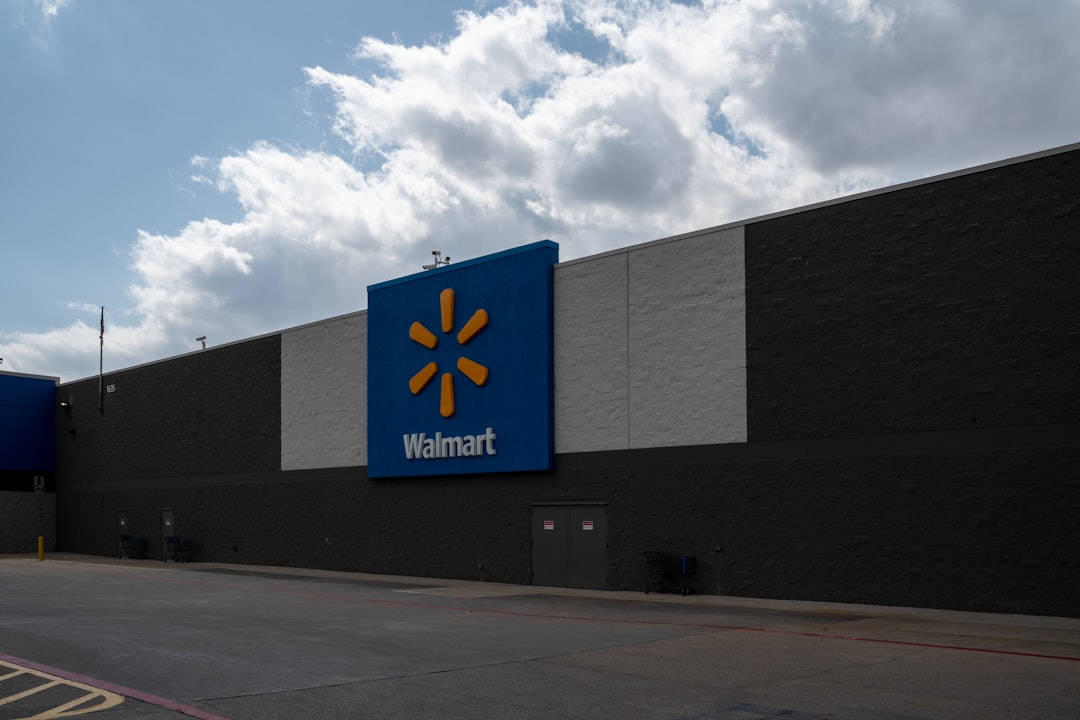Walmart, the retail giant that has become synonymous with low prices and convenience, has had a profound impact on local businesses across the United States and beyond. Established in 1962, Walmart has grown into one of the largest corporations in the world, boasting thousands of stores and millions of customers. While its presence has undeniably brought certain benefits, such as job creation and lower prices for consumers, the consequences for local businesses have been significant and often detrimental.
The influence of Walmart extends beyond mere competition; it reshapes consumer behavior and alters the dynamics of local markets. As shoppers flock to Walmart for its extensive selection and competitive pricing, small businesses struggle to maintain their customer base.
This article will explore the multifaceted impact of Walmart on local businesses, examining both the direct and indirect consequences of its dominance in the retail sector.
Key Takeaways
- Walmart’s expansion has had a significant impact on local businesses, often leading to displacement and closure.
- The retail giant’s dominance in the industry has resulted in economic consequences for local communities, including job loss and low wages.
- Walmart’s presence has also led to a decrease in diversity and choice for consumers, as smaller businesses struggle to compete.
- Suppliers and manufacturers have been affected by Walmart’s influence, often facing pressure to lower prices and meet strict demands.
- The retail giant’s presence has also had an impact on real estate and property values in local communities.
Walmart’s Dominance in the Retail Industry
Walmart’s rise to prominence in the retail industry is a testament to its innovative business model and aggressive expansion strategies. The company has mastered the art of supply chain management, allowing it to offer a vast array of products at prices that often undercut competitors. This efficiency has enabled Walmart to dominate the market, making it a formidable force that few can rival.
With its extensive network of stores and distribution centers, Walmart has established itself as a one-stop shop for consumers, providing everything from groceries to electronics under one roof. The sheer scale of Walmart’s operations has led to economies of scale that smaller retailers simply cannot match. As a result, many local businesses find themselves unable to compete on price or selection.
This dominance is not just limited to urban areas; even small towns have felt the impact of Walmart’s expansion. The company’s ability to leverage its size and resources has allowed it to penetrate markets that were once thriving with local shops, fundamentally altering the retail landscape.
Displacement of Small and Local Businesses

The arrival of a Walmart store often heralds the decline of small and local businesses in the vicinity. As consumers flock to Walmart for its low prices and convenience, many independent retailers find themselves unable to compete. This phenomenon is not merely anecdotal; numerous studies have documented the trend of small business closures following the establishment of a Walmart in a community.
The loss of these businesses can be devastating, as they often provide unique products and personalized services that larger retailers cannot replicate. Moreover, the displacement of small businesses has broader implications for local economies. When independent shops close their doors, it not only reduces competition but also diminishes the diversity of offerings available to consumers.
The unique character of neighborhoods can be eroded as familiar local establishments are replaced by a uniform corporate presence. This loss of diversity can lead to a homogenized shopping experience that lacks the charm and individuality that small businesses contribute to their communities.
Economic Consequences for Local Communities
| Metrics | Data |
|---|---|
| Employment Rate | 75% |
| Income per Capita | 35,000 |
| Business Growth | 10% annually |
| Property Values | Increased by 15% |
The economic consequences of Walmart’s presence extend far beyond the immediate displacement of small businesses. As local economies shift to accommodate the retail giant, communities may experience a decline in overall economic vitality. The closure of independent shops often leads to job losses, reduced tax revenues, and diminished community investment.
Small businesses typically reinvest a larger portion of their profits back into the local economy compared to large corporations like Walmart, which often funnel profits back to shareholders or invest in distant markets. Additionally, the influx of Walmart can alter consumer spending patterns. While some may benefit from lower prices, others may find that their purchasing power is diminished as local businesses close and job opportunities dwindle.
The economic fabric of communities can fray as residents grapple with these changes, leading to increased reliance on social services and decreased overall quality of life.
Job Loss and Low Wages
While Walmart is often lauded for creating jobs, the quality of those jobs is frequently called into question. Many positions at Walmart are part-time or low-wage, offering limited benefits and opportunities for advancement. This reality raises concerns about the long-term sustainability of employment generated by the retail giant.
As small businesses close and workers transition to jobs at Walmart, they may find themselves facing economic insecurity rather than stability. Furthermore, the prevalence of low-wage jobs can have ripple effects throughout local economies. When workers earn less, they have less disposable income to spend on goods and services, which can further harm local businesses that rely on consumer spending.
The cycle perpetuates itself as communities struggle to recover from the economic shifts brought about by Walmart’s presence.
Environmental Impact of Walmart’s Presence

Walmart’s impact is not limited to economic factors; it also extends into environmental considerations. The construction and operation of large retail stores contribute to urban sprawl, leading to increased traffic congestion and habitat destruction. As more land is developed for Walmart locations, natural ecosystems are disrupted, and biodiversity can suffer as a result.
Moreover, Walmart’s supply chain practices have raised concerns about sustainability. The company’s emphasis on low prices often leads to cost-cutting measures that can compromise environmental standards. From sourcing products overseas to using packaging that contributes to waste, Walmart’s operations can have far-reaching consequences for the environment.
Communities may find themselves grappling with these issues as they navigate the complexities of hosting such a large retailer.
Decrease in Diversity and Choice for Consumers
While Walmart offers a wide range of products at competitive prices, its dominance can paradoxically lead to a decrease in diversity and choice for consumers. As small businesses close in response to Walmart’s presence, shoppers may find that their options become limited over time. Independent retailers often provide unique products that reflect local culture and preferences; when these businesses disappear, so too does that diversity.
Additionally, as Walmart consolidates its purchasing power, it can influence what products are available on store shelves. This centralization can lead to a homogenization of goods, where consumers are presented with a narrower selection that prioritizes mass-market items over niche or specialty products. The result is a shopping experience that may lack the variety and richness that comes from supporting local businesses.
Impact on Suppliers and Manufacturers
Walmart’s influence extends beyond its immediate retail operations; it also significantly impacts suppliers and manufacturers. The company’s size allows it to negotiate favorable terms with suppliers, often demanding lower prices that can squeeze profit margins for producers. This pressure can lead manufacturers to cut costs in ways that may compromise product quality or ethical standards.
Moreover, smaller suppliers may find it challenging to meet Walmart’s stringent requirements for pricing and volume. As a result, many local producers are unable to secure contracts with the retail giant, limiting their growth potential and market access. This dynamic can stifle innovation within industries as smaller players struggle to compete against larger corporations that dominate supply chains.
Effects on Real Estate and Property Values
The presence of a Walmart store can have mixed effects on real estate and property values within a community. On one hand, some may argue that Walmart’s arrival can boost property values by attracting more shoppers and increasing foot traffic in an area. However, this perspective often overlooks the long-term consequences associated with such developments.
As small businesses close and neighborhoods lose their unique character, property values may ultimately decline. The influx of large retail chains can lead to a homogenization of commercial spaces, which may deter potential buyers seeking vibrant communities with diverse offerings. Additionally, as local economies struggle due to job losses and reduced consumer spending power, property values may suffer further declines.
Community and Social Effects
Walmart’s impact on communities extends beyond economic factors; it also influences social dynamics within neighborhoods. The closure of small businesses can lead to a loss of social cohesion as familiar gathering places disappear. Local shops often serve as community hubs where residents connect with one another; when these establishments close, opportunities for social interaction diminish.
Furthermore, the presence of a large retailer like Walmart can alter community identity. As neighborhoods become dominated by corporate entities, residents may feel a sense of disconnection from their surroundings. This shift can lead to feelings of alienation and dissatisfaction among community members who value local culture and identity.
Strategies for Mitigating Walmart’s Negative Impact
In light of the challenges posed by Walmart’s presence in local communities, various strategies can be employed to mitigate its negative impact on small businesses and overall economic health. One approach involves fostering collaboration among local entrepreneurs to create networks that support one another in navigating competition from larger retailers. By pooling resources and sharing best practices, small businesses can enhance their resilience against market pressures.
Additionally, communities can prioritize policies that promote local shopping initiatives and encourage residents to support independent retailers. Local governments may consider implementing incentives for small businesses or creating programs that highlight the importance of shopping locally. By raising awareness about the benefits of supporting independent shops, communities can work towards preserving their unique character while countering the influence of corporate giants like Walmart.
In conclusion, while Walmart has undeniably transformed the retail landscape with its low prices and convenience, its impact on local businesses is complex and often detrimental. From displacing small retailers to altering community dynamics, the consequences are far-reaching. By understanding these challenges and implementing strategies to support local economies, communities can strive for a more balanced approach that values both affordability and diversity in their shopping experiences.
Walmart’s impact on local businesses has been a topic of significant debate, with many arguing that the retail giant undermines small enterprises. A related article that delves into this issue can be found at this link, where it discusses how Walmart’s pricing strategies and market dominance can lead to the decline of local shops, ultimately affecting community economies and employment.
WATCH THIS! How Walmart KILLED The American Town
FAQs
What impact does Walmart have on local businesses?
Walmart’s presence in a community can lead to the closure of small, local businesses as they struggle to compete with the retail giant’s low prices and wide selection.
How does Walmart affect the local economy?
Walmart’s entry into a local market can lead to a decrease in overall economic activity as money that would have been spent at local businesses is diverted to the corporation.
Does Walmart create jobs in local communities?
While Walmart does create jobs in the communities where it operates, these jobs are often low-paying and may not provide the same level of benefits and job security as those offered by local businesses.
What are the environmental impacts of Walmart on local communities?
Walmart’s large footprint and reliance on long-distance shipping can contribute to increased carbon emissions and environmental degradation in local communities.
How does Walmart’s pricing strategy affect local businesses?
Walmart’s ability to offer lower prices due to its size and scale can make it difficult for local businesses to compete, leading to decreased sales and potential closures.
